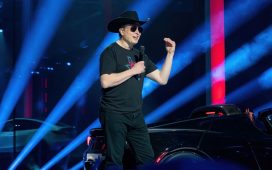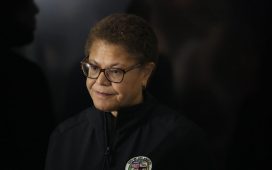Profitability among Toyota and Lexus dealers year-to-date is up almost a third to near-record results, and is tracking even higher as the automaker works to climb back to pre-COVID production levels.
“We’re in a completely different place” from six months ago, said Bob Carter, Toyota Motor North America’s head of sales, during a teleconference last week.
“I’m anticipating that this fourth quarter that we’re in right now, when you consider COVID, and all the natural disasters, and all the challenges — this fourth quarter could be one of the finest quarters in North American auto history, and certainly for Toyota,” he said.
Chris Reynolds, head of North American manufacturing, said the region’s production had increased to 93.7 percent of capacity by the end of September. The previous year, it was 95.9 percent.
“Many of our plants have been working overtime and Saturdays to help meet strong customer demand for our products,” Reynolds said. “Our team members in the plants are voting with their feet. They believe in the [safety] protocols. They respect them, even though many of them are uncomfortable and inconvenient, but they get the job done.”
Combined Toyota and Lexus sales in September were up 16 percent from a year earlier, and were tracking up for October, Carter said. The company sees a continued strong recovery through the end of the year and 2021. Carter predicted the industry will finish 2020 at 14.5 million and said the company believes 2021 will recover to 15.5 million.
“The automotive industry has not just survived, but it’s really thrived during this pandemic,” Carter said, adding that he feels that the Toyota brand will finish this year at about 1.75 million sales in the U.S., with Lexus on track to finish at about 265,000 sales. The Toyota brand sold 2,085,234 vehicles in the U.S. in 2019, while Lexus’ volume was 298,114 vehicles.
Pickups, crossovers and hybrids remain particularly strong for Toyota, Carter said, despite very short dealer stocks of such vehicles. He said the automaker’s pickup plant in San Antonio, which makes the full-size Tundra and midsize Tacoma, is running at “maximal overtime” to keep up with demand.
“That plant is running three Saturdays a month; we’re running wide open,” Carter said.
Carter said that while Toyota is sticking to its plan to expand its hybrid lineup — it revived the Venza nameplate for a new hybrid-only crossover and redesigned the Sienna minivan — sales are constrained by a lack of batteries.
“Overall, we have 14 [hybrid] models when you combine the two brands,” Carter said. “We are bringing up that [battery] supply, but if we could bring it up a little quicker than the plan, we could sell it. The demand is truly there.”
In terms of dealing with COVID-19, Reynolds said the safety protocols Toyota put in place after it restarted production in early May are working, but they add complexity to plant operations. Still, Toyota’s depleted dealership lots should start to fill back up to normal levels soon. He doesn’t see a second production shutdown on the horizon, even if the virus spread continues to grow.
“We have to balance that intense effort to fill the pipeline with, frankly, the health and safety of our team members in each of our factories and make sure that we’re doing everything responsibly,” Reynolds said. “We think that probably by no later than the end of this calendar year, we should have the pipeline closer back to what I’ll call normal than where it was at the end of our shutdown, but it’s taking a while to build back up.”
Carter said the economy as a whole is recovering, and the auto industry is continuing to capitalize with strong demand across the board, especially for more expensive models. He said search results for Toyota and Lexus are up significantly year-over-year.
“If you watch the transaction prices for the industry, transaction prices are heading up substantially, and what’s really driving that is consumer demand” away from sedans and “into big pickup trucks and SUV,” Carter said.
He added that even within the specific models, consumer demand right now “is not for base grades, it’s for upper grades.”
Carter also said the pressure now is to keep up with demand.
“We don’t see any doom or cliff coming in the future,” the longtime Toyota executive said. “We’re pedaled down; it’s go time.”







